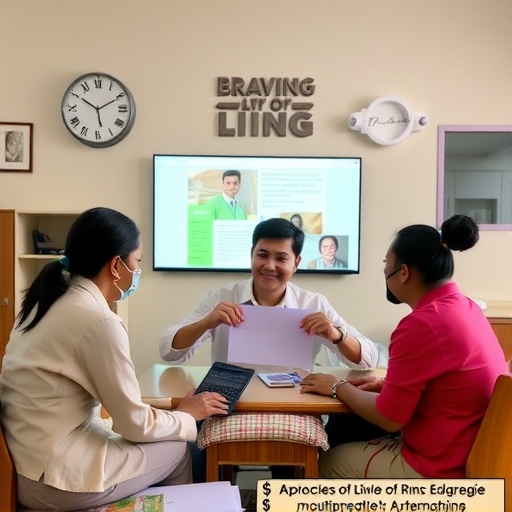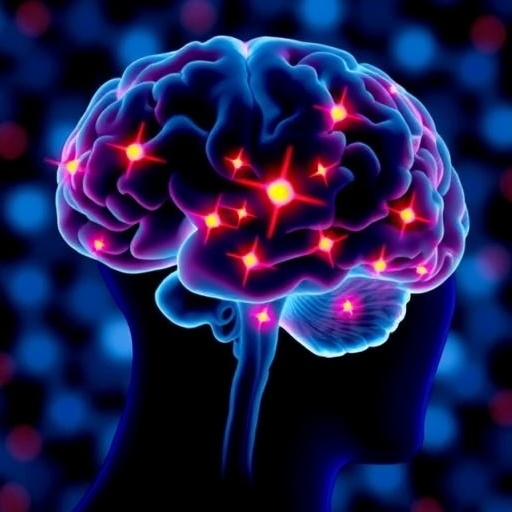In the ever-evolving world of organ transplantation, the significance of education on living donation cannot be overstated. With the demand for organs consistently exceeding the supply, it has become imperative for transplant professionals to enhance their knowledge and skills regarding living donation. A recent study, published in Current Transplant Reports, emphasizes a comprehensive multimedia educational strategy aimed at fostering more effective education for transplant professionals. This innovative approach is spearheaded by a coalition of experts who understand the complexities of living donations and the critical need for continuous professional development in this area.
This multifaceted initiative is the brainchild of Gupta, Agarwal, Mejia, and their colleagues, whose work reflects a growing recognition of the importance of varied educational resources in the field of transplantation. They advocate for the establishment of a professional society multimedia workgroup that can bring together experts from diverse backgrounds, including physicians, nurses, and psychological support staff. By pooling their collective knowledge and resources, the authors aim to create a comprehensive educational framework that will not only inform but also inspire transplant professionals in their pursuit of living donation advocacy.
The core of their proposal lies in the integration of various media formats that can cater to different learning preferences. The team suggests utilizing video content, podcasts, interactive webinars, and even virtual reality simulations to deliver crucial information about living donation. This variety ensures that all professionals, regardless of their age or technological savvy, can access and retain the educational material effectively. The authors emphasize the need for tailored content that addresses the specific concerns and questions faced by professionals at different stages of their careers, ensuring relevance and engagement.
Furthermore, the authors highlight that existing educational methods have been largely traditional and often fail to engage professionals adequately. By adopting a multimedia approach, the project seeks to bridge the gap between theoretical knowledge and practical, real-world application. The use of case studies, personal testimonials from donors and recipients, and expert interviews could significantly enhance the depth of understanding among transplant professionals, bringing abstract concepts to life in a relatable manner. This not only aids retention but encourages active participation and critical thinking.
An essential component of the multimedia strategy involves fostering a culture of collaboration among healthcare providers. The authors note that living donation is not a singular effort; rather, it involves an interconnected network of professionals, each playing a vital role. To effectively convey the complexities of this network, the proposed multimedia workgroup would strive to create educational modules that highlight the importance of interprofessional communication and teamwork. This collaborative focus is bound to improve outcomes and ultimately enhance patient care.
Moreover, the group plans to incorporate real-time feedback mechanisms within their educational offerings. This is especially significant as it allows for the continuous refinement of educational content based on user interaction and understanding. By incorporating assessments, surveys, and discussions into their modules, the team can gather data to improve future iterations of their educational materials. This adaptability ensures that the evolving landscape of transplantation education is reflected in the resources provided to professionals.
The authors also address the potential barriers to accessing educational resources, particularly for professionals in remote or underserved areas. By leveraging technology, the group aims to create an inclusive platform where every transplant professional can access high-quality educational content from anywhere in the world. This democratization of information is crucial in ensuring that all professionals are equipped with the necessary tools to advocate for living donations effectively, ultimately benefiting patients in need of transplants.
In addition to addressing educational disparities, the proposed multimedia approach seeks to raise awareness about the importance of living donation among the broader population. By developing public-facing materials that can be disseminated alongside professional training, the work group aims to engage community members and encourage discussions about living donation. The educational materials could take the form of informative videos, social media campaigns, and community workshops designed to demystify living donation and promote its benefits. This dual-pronged approach to education is a commendable step toward fostering a more informed society.
A critical area of focus within this multimedia strategy will be the psychological aspects of living donation. The authors emphasize that educational resources should address not just the mechanics of donation but also the emotional and moral considerations involved. By including psychological support training in their modules, the work group envisions equipping transplant professionals with the skills needed to navigate sensitive conversations with potential donors and their families. This training is vital, as understanding the emotional weight of these decisions can significantly improve the experiences of all parties involved.
The timeline for the implementation of this multifaceted educational approach is also crucial to consider. The team outlines a phased strategy that begins with pilot projects focused on specific audiences, such as nephrologists or transplant coordinators, with the intent to gradually expand the reach of their resources. This incremental approach allows for testing and refinement, ensuring that each educational module receives the necessary attention and quality assurance before a wider rollout. The potential for such a structured timeline is to facilitate comprehensive, evidence-based education that can elevate living donation practices nationwide.
Finally, the authors reiterate that the creation of a dedicated multimedia workgroup must undergo strong governance to ensure that the integrity and quality of educational materials are maintained. They recommend a robust oversight structure involving stakeholders from various professional backgrounds to bring diverse perspectives to the initiative. Such a body would ensure not only the relevance of the content but also its scientific accuracy and ethical delivery.
In summary, the adoption of a multimedia educational strategy for living donation education represents a significant leap forward for transplant professionals. As the authors of the study emphasize, failure to adapt to new educational paradigms risks leaving professionals ill-prepared to advocate for living donations effectively. By harnessing the power of innovative media, the professionals behind this initiative are poised to foster an environment where education translates into improved patient outcomes and a greater understanding of living donation among both healthcare providers and the general public.
Subject of Research: Multimedia education for living donation among transplant professionals.
Article Title: Multimedia Approach To Living Donation Education for Transplant Professionals: Building a Professional Society Multimedia Work Group.
Article References:
Gupta, M., Agarwal, G., Mejia, C. et al. Multimedia Approach To Living Donation Education for Transplant Professionals: Building a Professional Society Multimedia Work Group.
Curr Transpl Rep 12, 27 (2025). https://doi.org/10.1007/s40472-025-00483-7
Image Credits: AI Generated
DOI: 10.1007/s40472-025-00483-7
Keywords: Living donation, transplant professionals, multimedia education, healthcare collaboration, psychological support.
Tags: collaborative education in healthcarecontinuous professional development in healthcareeducational strategies for transplant professionalseffective communication in organ transplantationenhancing knowledge in organ donationfostering living donation advocacyinnovative learning resources for healthcareliving donation educationmultidisciplinary approach to living donationmultimedia collaboration in transplantationorgan transplantation trainingprofessional society workgroup in transplantation





